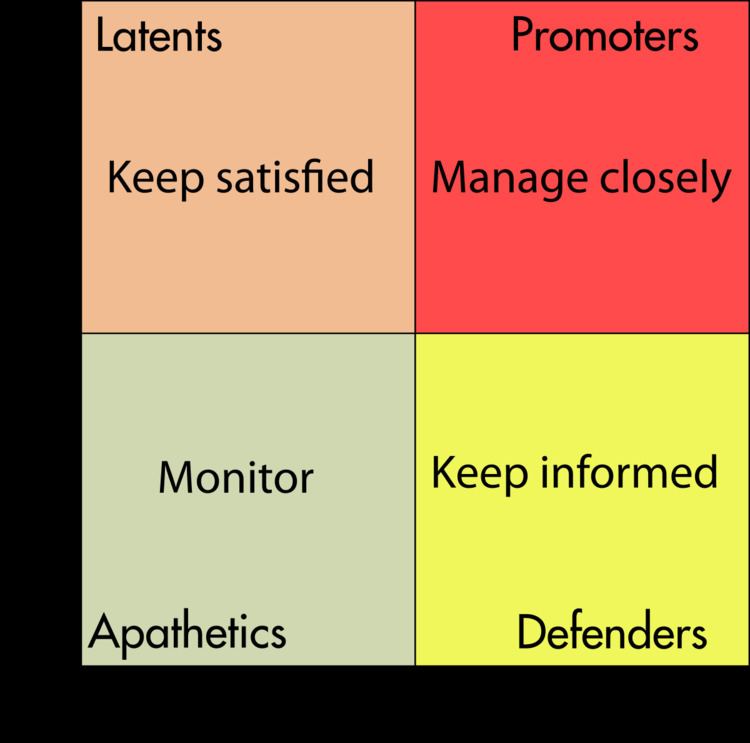 | ||
Stakeholder analysis in conflict resolution, project management, and business administration, is the process of identifying the individuals or groups that are likely to affect or be affected by a proposed action, and sorting them according to their impact on the action and the impact the action will have on them. This information is used to assess how the interests of those stakeholders should be addressed in a project plan, policy, program, or other action. Stakeholder analysis is a key part of stakeholder management. A stakeholder analysis of an issue consists of weighing and balancing all of the competing demands on a firm by each of those who have a claim on it, in order to arrive at the firm's obligation in a particular case. A stakeholder analysis does not preclude the interests of the stakeholders overriding the interests of the other stakeholders affected, but it ensures that all affected will be considered.
Contents
Stakeholder analysis is frequently used during the preparation phase of a project to assess the attitudes of the stakeholders regarding the potential changes. Stakeholder analysis can be done once or on a regular basis to track changes in stakeholder attitudes over time.
Types
Types of stakeholders include:
Therefore, stakeholder analysis has the goal of developing cooperation between the stakeholder and the project team and, ultimately, assuring successful outcomes for the project
Methods of Stakeholder Mapping
The following list identifies some of the best known and most commonly used methods for stakeholder mapping:
Mapping techniques include the following sub-set of results from a Web search of analysis techniques being used by aid agencies, governments or consultant groups:
The first step in building any stakeholder map is to develop a categorised list of the members of the stakeholder community. Once the list is reasonably complete it is then possible to assign priorities in some way, and then to translate the ‘highest priority’ stakeholders into a table or a picture. The potential list of stakeholders for any project will always exceed both the time available for analysis and the capability of the mapping tool to sensibly display the results, the challenge is to focus on the ‘right stakeholders’ who are currently important and to use the tool to visualise this critical sub-set of the total community.
The most common presentation styles use a matrix to represent two dimensions of interest with frequently a third dimension shown by the colour or size of the symbol representing the individual stakeholders.
Some of the commonly used ‘dimensions’ include:
Benefits
Stakeholder analysis helps with the identification of the following:
